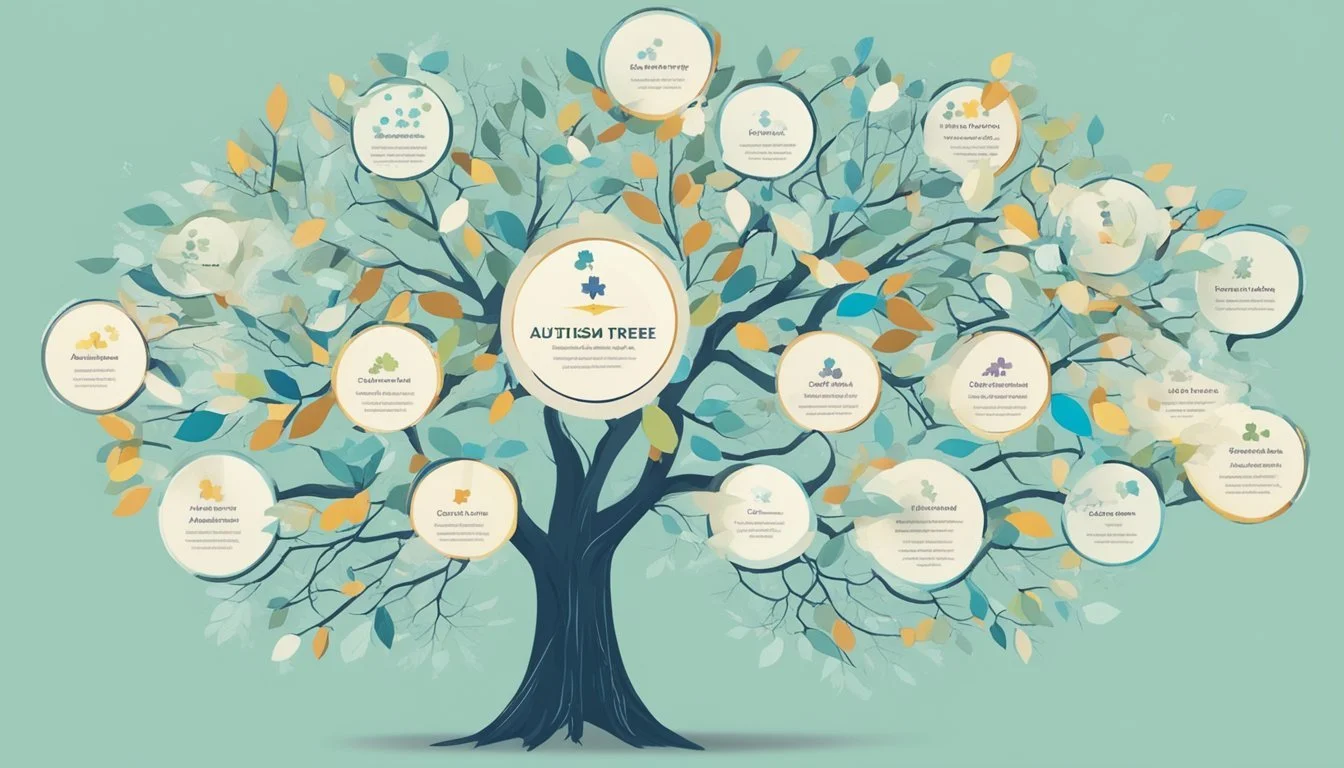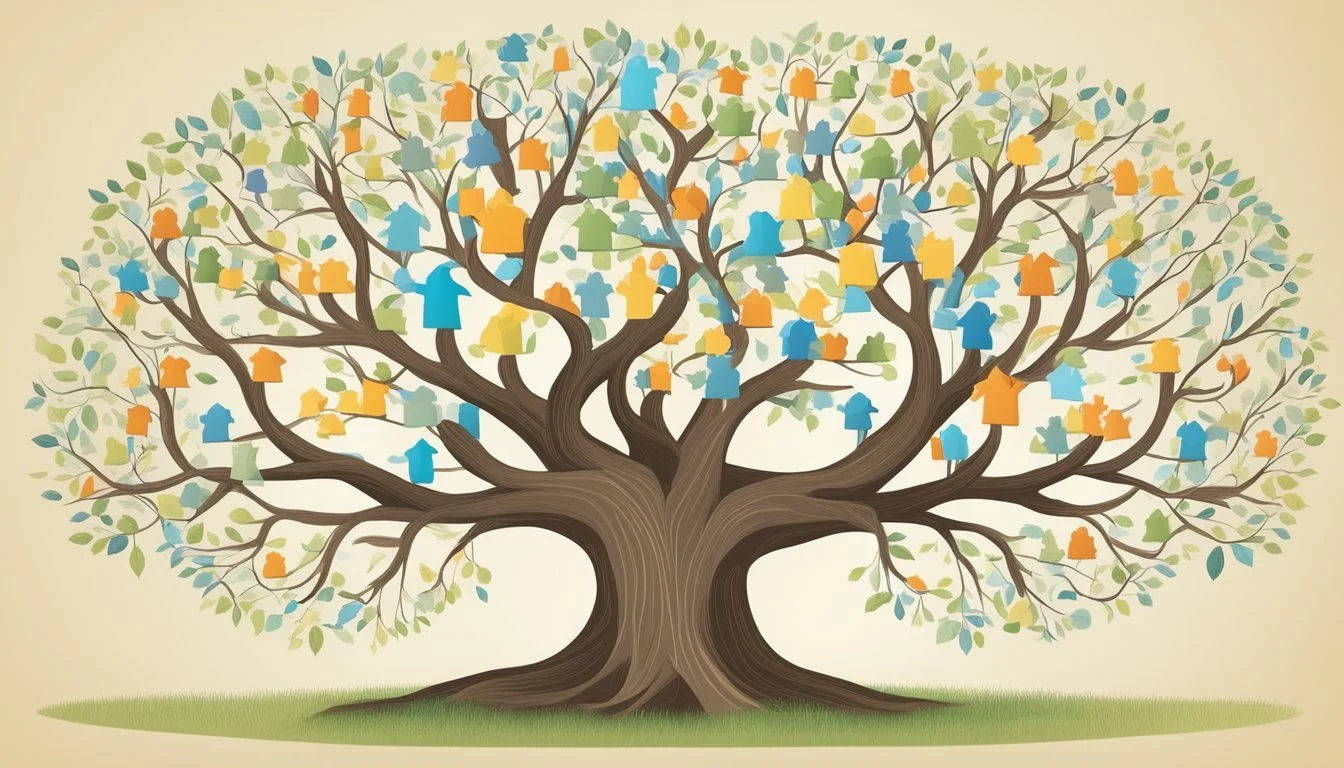Understanding the Hereditary Nature of Autism Spectrum Disorders
Autism spectrum disorder (ASD) has long intrigued researchers and families alike, particularly regarding its origins. Genetic factors play a significant role in autism, with studies indicating a heritability of around 80%. This means that a substantial portion of autism risk can be attributed to inherited genes rather than environmental factors or random mutations.
Families often wonder about the likelihood of passing autism to their children. While there is no single "autism gene," the condition results from complex interactions between multiple genetic variants. Research suggests that both maternal and paternal lineages contribute to autism risk, with some evidence pointing to a slightly higher contribution from the father's side.
Understanding the genetic basis of autism is crucial for early detection and intervention. As scientists continue to unravel the intricate genetic landscape of ASD, families affected by autism gain valuable insights into the condition's inheritance patterns. This knowledge can aid in genetic counseling and inform decisions about family planning.
Understanding Autism Spectrum Disorder
Autism Spectrum Disorder (ASD) is a complex neurodevelopmental condition that affects social interaction, communication, and behavior. It manifests differently in each individual, with varying levels of severity and support needs.
Defining Autism and ASD
Autism Spectrum Disorder encompasses a range of conditions previously diagnosed separately, including autistic disorder, Asperger's syndrome, and pervasive developmental disorder not otherwise specified. ASD is characterized by challenges in social communication and restricted, repetitive patterns of behavior or interests.
Individuals with ASD may struggle with interpreting social cues, maintaining conversations, and developing relationships. They often display intense focus on specific topics or objects and may engage in repetitive movements or routines.
ASD is not a disease or illness, but a neurological difference in brain development and function. It affects how a person perceives and interacts with the world around them.
Neurodevelopmental Characteristics
ASD impacts brain development, particularly in areas responsible for social interaction, communication, and sensory processing. Research suggests differences in brain cell connections and neural pathways in individuals with autism.
People with ASD may experience:
Heightened or reduced sensitivity to sensory stimuli
Difficulty regulating emotions
Challenges with executive functioning
Atypical language development
Some individuals with ASD demonstrate exceptional abilities in specific areas, such as memory, mathematics, or music. This highlights the diverse nature of autism and the importance of recognizing individual strengths and challenges.
Diagnosis of Autism
Diagnosing ASD involves comprehensive evaluation by healthcare professionals. The process typically includes:
Behavioral observations
Developmental assessments
Medical history review
Interviews with parents or caregivers
Diagnosis is based on criteria outlined in the Diagnostic and Statistical Manual of Mental Disorders (DSM-5). These criteria focus on persistent deficits in social communication and interaction, as well as restricted, repetitive patterns of behavior, interests, or activities.
Early diagnosis is crucial for accessing appropriate interventions and support. Signs of ASD can often be detected in early childhood, but some individuals may not receive a diagnosis until later in life.
It's important to note that ASD often co-occurs with other conditions, such as anxiety or ADHD, which may influence the diagnostic process and subsequent treatment plans.
Genetic Factors in Autism
Autism has a strong genetic component, with both inherited and de novo genetic variations playing important roles. Research involving twin studies, family studies, and large-scale population genetics has provided valuable insights into the complex genetic architecture of autism spectrum disorder.
Autism and Heredity
Autism tends to run in families, suggesting a significant heritable component. Parents with autism or autistic traits have a higher likelihood of having children with autism. Siblings of individuals with autism also have an increased risk compared to the general population.
Genetic testing can help identify some inherited variations associated with autism. However, the inheritance pattern is complex and not fully understood. Many genes and genetic interactions contribute to autism risk, rather than a single gene.
Family history remains an important factor in assessing autism risk. Children with an autistic sibling have a 2-18% chance of developing autism, much higher than the general population risk of about 1%.
Role of Genetic Variations
Both common and rare genetic variations contribute to autism risk. Common variations with small individual effects likely interact to increase susceptibility. Rare mutations with larger effects are also important in some cases.
Inherited and de novo (new) mutations in DNA can disrupt genes involved in brain development and function. Some key genes linked to autism risk include:
SHANK3
CHD8
SYNGAP1
ADNP
These genes play roles in synaptic function, chromatin remodeling, and other neurobiological processes. However, no single gene accounts for more than 1-2% of autism cases.
Twin and Family Studies
Twin studies provide strong evidence for genetic influence in autism. Identical twins, sharing 100% of their DNA, show much higher concordance rates for autism than fraternal twins.
Key findings from twin studies:
Concordance in identical twins: 60-90%
Concordance in fraternal twins: 0-30%
This large difference points to substantial genetic factors. However, the less than 100% concordance in identical twins also indicates environmental influences play a role.
Family studies reveal that autism risk is 2-18% for siblings of autistic individuals, much higher than population rates. This further supports genetic contributions to autism.
Population-Based Genetics Research
Large-scale population studies have advanced understanding of autism genetics. A study of nearly 2 million people across five countries (Sweden, Denmark, Finland, Israel, and Western Australia) found that about 80% of autism risk comes from inherited genetic factors.
These studies help quantify:
Heritability of autism (estimated at 80% or higher)
Relative contributions of common and rare genetic variations
Patterns of familial risk
Population research also reveals differences in autism prevalence between males and females, suggesting sex-linked genetic factors may be involved. Ongoing research aims to identify more autism-related genes and understand their interactions.
Environmental Contributions to Autism
Environmental factors play a significant role in autism risk. Research indicates that both genetic predisposition and environmental exposures interact to influence autism development.
Influence of Environmental Factors
Advanced parental age, particularly paternal age over 34, has been identified as a key risk factor for autism in offspring. Chemical exposures during pregnancy and early childhood may also contribute to autism risk.
Studies have found links between certain environmental toxins and increased autism rates. Prenatal exposure to air pollution, pesticides, and heavy metals like lead and mercury has been associated with higher autism prevalence.
Maternal infections and immune activation during pregnancy may impact fetal brain development. Complications during pregnancy or birth can also elevate autism risk.
Interaction Between Genes and Environment
Autism likely results from a complex interplay between genetic susceptibility and environmental triggers. Individuals with certain genetic variations may be more vulnerable to environmental factors that promote autism.
This gene-environment interaction helps explain why autism rates have increased faster than genetic changes alone would predict. Epigenetic mechanisms, where environmental exposures alter gene expression without changing DNA sequences, likely play a role.
Twin studies support the importance of environmental contributions. While identical twins have high autism concordance, it's not 100%, indicating non-genetic factors are involved.
Current estimates suggest 50-80% of autism risk stems from genetics. Environmental factors may account for 20-50% of risk, with considerable individual variation.
Risk and Likelihood of Autism
Autism risk varies based on family history and genetic factors. Both maternal and paternal lineages contribute to inherited autism risk through complex genetic mechanisms.
Calculating the Risk of Autism
Genetic studies estimate the heritability of autism at 80% or higher. Around 1,000 different genetic changes may influence autism development. The general population has about a 1.5% chance of having autism.
For children with an autistic parent, the risk increases to 3-5%. This elevated risk applies to both maternal and paternal lineages. Researchers use a liability threshold model to assess autism risk.
This model considers cumulative genetic and environmental factors. When these factors exceed a certain threshold, autism develops.
Sex Differences in Autism
Autism shows a significant sex bias, with males being 4 times more likely to be diagnosed than females. This bias may stem from genetic and hormonal differences between sexes.
Sex chromosomes play a role in autism risk. The X chromosome contains several genes linked to autism. Females have two X chromosomes, potentially offering some protection against autism-related mutations.
Males, with only one X chromosome, lack this backup mechanism. This difference partly explains the higher autism rates in males.
Sibling and Extended Family Risk
Siblings of autistic individuals face an increased autism risk. For families with one autistic child, the chance of a second child having autism is 2-18%.
This risk is even higher for identical twins. If one identical twin has autism, the other has a 60-90% chance of being autistic.
Extended family members also show elevated risk. Children with an autistic aunt or uncle have a 3-5% chance of autism. This risk is about twice the general population rate.
Cousins of autistic individuals face a slightly increased risk as well. These patterns highlight the strong genetic component in autism inheritance.
Implications for Families and Individuals
Genetic studies provide insights into autism's heritability, influencing family planning and early intervention strategies. This knowledge impacts individuals with autism and their families, shaping their approach to diagnosis, treatment, and support.
Living with a Genetic Diagnosis
Genetic testing can offer clarity for families affected by autism. It may explain why a child has certain traits or challenges. This information can help parents better understand their child's needs.
Knowing about genetic factors can also inform family planning decisions. Parents may seek genetic counseling to assess risks for future children.
For individuals with autism, a genetic diagnosis can provide a sense of identity and community. It may help them connect with others who share similar genetic variations.
Strategies for Early Intervention
Early intervention is crucial for children with autism. Genetic studies help identify risk factors, allowing for earlier screening and diagnosis.
The National Institutes of Health supports research on effective interventions. These programs often focus on improving communication skills and reducing challenging behaviors.
Early intervention can significantly improve a child's developmental trajectory. It may enhance cognitive abilities, language skills, and social interactions.
Parents play a key role in early intervention. They learn strategies to support their child's development at home, complementing professional therapies.
Support Systems and Resources
Organizations like Autism Speaks provide resources for families navigating an autism diagnosis. They offer educational materials, support groups, and research updates.
Local support groups connect families facing similar challenges. These networks can be valuable sources of emotional support and practical advice.
Many communities offer specialized services for individuals with autism. These may include educational programs, vocational training, and respite care for families.
Online forums and social media groups allow families to share experiences and advice. They can be especially helpful for those in remote areas with limited local resources.
Associated Conditions and Comorbidities
Autism spectrum disorder often coexists with various medical and developmental conditions. These associated conditions can impact diagnosis, treatment approaches, and overall quality of life for individuals with autism.
Autism and Concurrent Disorders
Psychiatric and neurological disorders frequently occur alongside autism. Attention deficit hyperactivity disorder (ADHD) is one of the most common co-occurring conditions, affecting up to 50% of individuals with autism. Anxiety disorders and depression are also prevalent.
Epilepsy is seen in about 20-30% of people with autism, with seizures often beginning in childhood or adolescence. Schizophrenia and bipolar disorder have higher rates in the autistic population compared to the general public.
Sleep disorders, gastrointestinal issues, and immune system dysfunctions are other medical conditions that frequently accompany autism. These can exacerbate core autism symptoms and require specific management strategies.
Neurological and Genetic Overlap
Certain genetic conditions show a significant overlap with autism. Fragile X syndrome, the most common inherited cause of intellectual disability, is found in about 2-6% of autistic individuals. Rett syndrome, caused by mutations in the MECP2 gene, shares some features with autism but is primarily seen in females.
Neurological differences in autism involve alterations in brain structure and function. Abnormalities in synapses and neurons, particularly in areas related to social cognition and communication, are common findings. The SHANK3 gene, involved in synapse formation, has been linked to both autism and schizophrenia.
Research suggests shared genetic pathways between autism and other neurodevelopmental disorders. This overlap highlights the complex interplay between genes, brain development, and behavior in autism spectrum disorders.
Developmental and Tic Disorders
Developmental coordination disorder affects motor skills and is prevalent in autism. It can impact daily activities and social interactions. Intellectual disability coexists in about 30-40% of autistic individuals, influencing cognitive abilities and adaptive functioning.
Tic disorders, including Tourette syndrome, occur more frequently in autism than in the general population. These involuntary movements or vocalizations can add complexity to autism symptoms and management.
Language disorders are also common, with some individuals experiencing significant delays or impairments in speech development. Others may have specific language impairments alongside their autism diagnosis.



